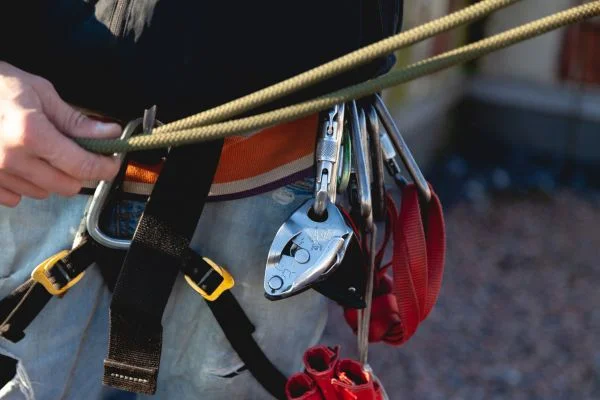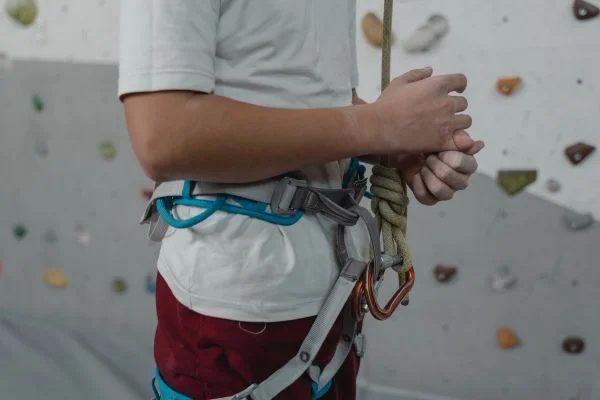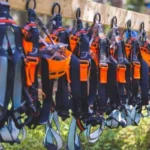Are you a rock climber looking for advice on when to replace climbing harness? Whether you’re a first-time climber or an experienced veteran, it’s essential to know when your harness needs replacing.
After all, the last thing you want is your harness to fail during a climb. So let’s look at the right time to replace the climbing harness and the signs that indicate it’s time for a new one.
When to Replace Climbing Harness
The answer depends on several factors, including the type of use, frequency, and materials used in manufacturing the harness. Generally speaking, most harnesses will last about five years if used regularly (1-2 times per week) for recreational purposes.
If you use your harness for more intensive activities such as alpine or aid climbing, you should replace it every three years. It would be best to inspect your harness for signs of wear before each use; frayed webbing or broken buckles are signs that your harness needs to be replaced immediately.
Also Read: How Long Do Climbing Harnesses Last?
Signs You Need To Consider

Examine the Webbing and Belay Loops
Your rock climbing harness’s webbing and belay loops should always feel soft, pliable, and free of any tears or frays. However, if these areas feel stiff or show any signs of wear, it might be time for a new harness.
Additionally, the webbing is starting to fray around the edges or has any visible holes. In that case, this could indicate that its breaking strength is compromised and should be replaced immediately.
Look at the Buckles
The buckles on your climbing harness should always properly and securely hold everything in place while climbing. If they seem loose or no longer securely locked into place, you may need to invest in a new one.
It would be best to inspect them for any rust spots or other signs of corrosion, as this could cause them to malfunction over time.
Check the Leg Loops
Finally, take some time to examine the leg loops of your harness. They, too, should be free from frays and tears and securely fastened so they don’t loosen while you’re climbing.
They must also fit snugly against your body without constricting or causing discomfort. If either occurs, it’s time for a new leg loop-equipped climbing harness!
Also Read: How Should a Climbing Harness Fit?
How to Care for Your Harness
A harness is an essential part of your gear if you’re an avid climber. They provide you with the safety and security you need while scaling a wall and ensure that you have the right fit and comfort level for whatever climb you’re taking on.
But with extended use, it’s important to remember that just like any other gear, your harness needs proper care and maintenance to keep it in top condition. Here are some tips on properly taking care of your climbing harness.
Keep It Clean
Climbing often involves dirt and grime from the walls, so keeping your harness clean is essential to maintain its performance and life span.
A damp cloth or sponge can be used for more delicate areas, but for tougher stains; a mild detergent can remove grime. Avoid using harsher chemicals such as bleach or solvents, as those may damage the webbing material of the harness.
After cleaning it, ensure all detergent residue is removed before allowing the harness to dry completely in a cool place away from direct sunlight or heat sources.
Check For Wear & Tear
Inspecting your harness regularly is key to ensuring everything is in good working order. Check for signs of wear, such as fraying at seams or worn straps, weak points due to sun exposure, broken buckles, or stitching coming undone.
If any of these issues are present, it’s time for a new harness, as continuing to use one in this condition could be dangerous and lead to severe accidents when climbing.
Check The Leg Loops & Waist Band
The leg loops and waistband should remain snug when secured correctly during each climb; if they become too loose after several uses, they may need replacing sooner than expected as they will no longer provide sufficient support while climbing.
Additionally, check that there are no sharp edges or rough patches on the leg loops or waistband, which could cause rubbing or chafing during long climbs – if there are signs of this kind of wear, then again, consider getting a new one sooner rather than later.
Also Read: How Tight Should a Climbing Harness Be?
Conclusion:
In summary, its quiet simple to know when to replace climbing harness. if you notice any frays or tears in either the webbing or belay loops of your harness; if there are signs of corrosion on the buckles; or if the leg loops are too loose or uncomfortable, then it’s probably time for a replacement.
Taking good care of your gear is essential for safe rock climbing—so make sure that you keep an eye out for these indicators so that you can stay safe out there!



